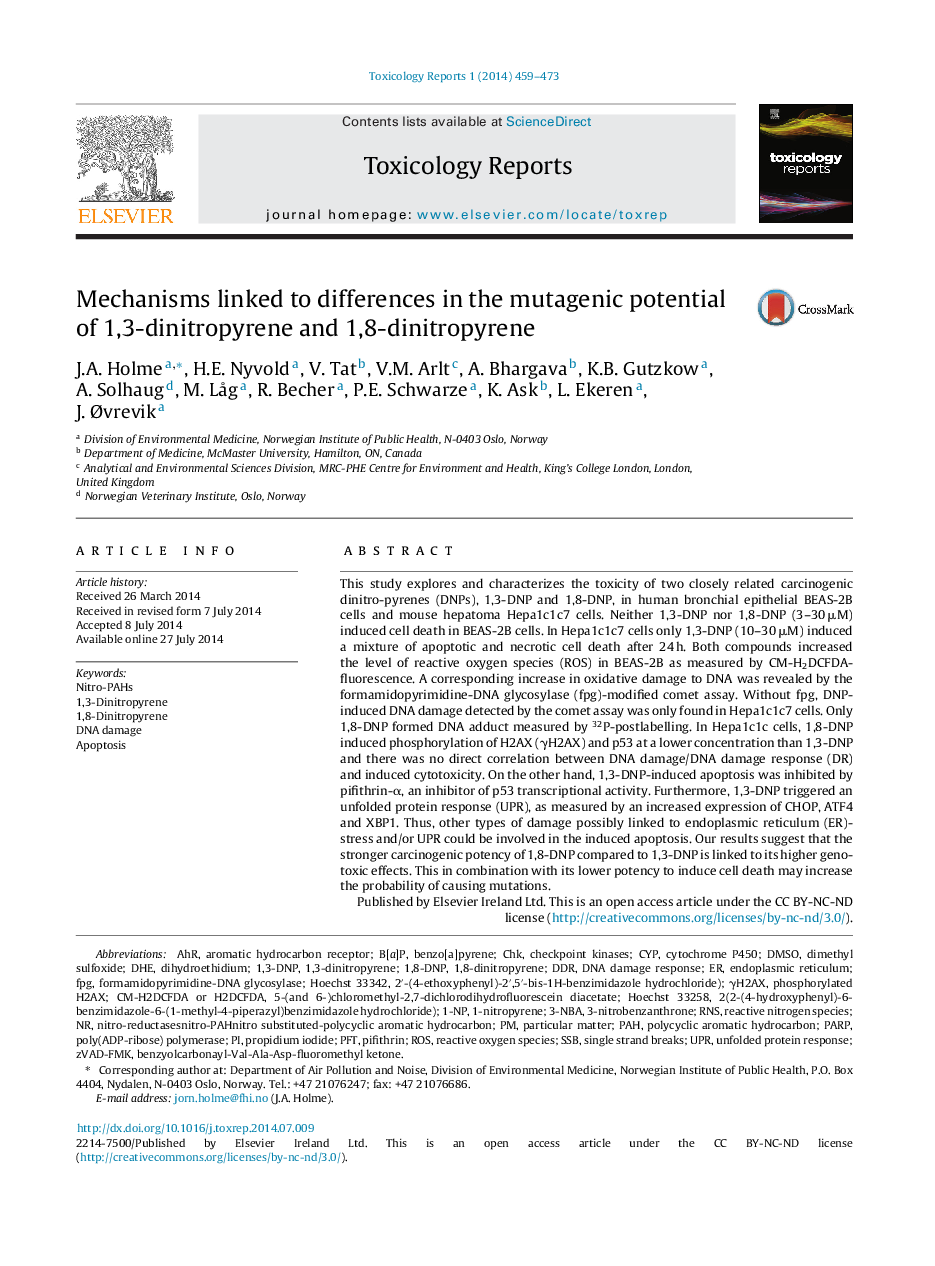| Article ID | Journal | Published Year | Pages | File Type |
|---|---|---|---|---|
| 2572333 | Toxicology Reports | 2014 | 15 Pages |
This study explores and characterizes the toxicity of two closely related carcinogenic dinitro-pyrenes (DNPs), 1,3-DNP and 1,8-DNP, in human bronchial epithelial BEAS-2B cells and mouse hepatoma Hepa1c1c7 cells. Neither 1,3-DNP nor 1,8-DNP (3–30 μM) induced cell death in BEAS-2B cells. In Hepa1c1c7 cells only 1,3-DNP (10–30 μM) induced a mixture of apoptotic and necrotic cell death after 24 h. Both compounds increased the level of reactive oxygen species (ROS) in BEAS-2B as measured by CM-H2DCFDA-fluorescence. A corresponding increase in oxidative damage to DNA was revealed by the formamidopyrimidine-DNA glycosylase (fpg)-modified comet assay. Without fpg, DNP-induced DNA damage detected by the comet assay was only found in Hepa1c1c7 cells. Only 1,8-DNP formed DNA adduct measured by 32P-postlabelling. In Hepa1c1c cells, 1,8-DNP induced phosphorylation of H2AX (γH2AX) and p53 at a lower concentration than 1,3-DNP and there was no direct correlation between DNA damage/DNA damage response (DR) and induced cytotoxicity. On the other hand, 1,3-DNP-induced apoptosis was inhibited by pifithrin-α, an inhibitor of p53 transcriptional activity. Furthermore, 1,3-DNP triggered an unfolded protein response (UPR), as measured by an increased expression of CHOP, ATF4 and XBP1. Thus, other types of damage possibly linked to endoplasmic reticulum (ER)-stress and/or UPR could be involved in the induced apoptosis. Our results suggest that the stronger carcinogenic potency of 1,8-DNP compared to 1,3-DNP is linked to its higher genotoxic effects. This in combination with its lower potency to induce cell death may increase the probability of causing mutations.
